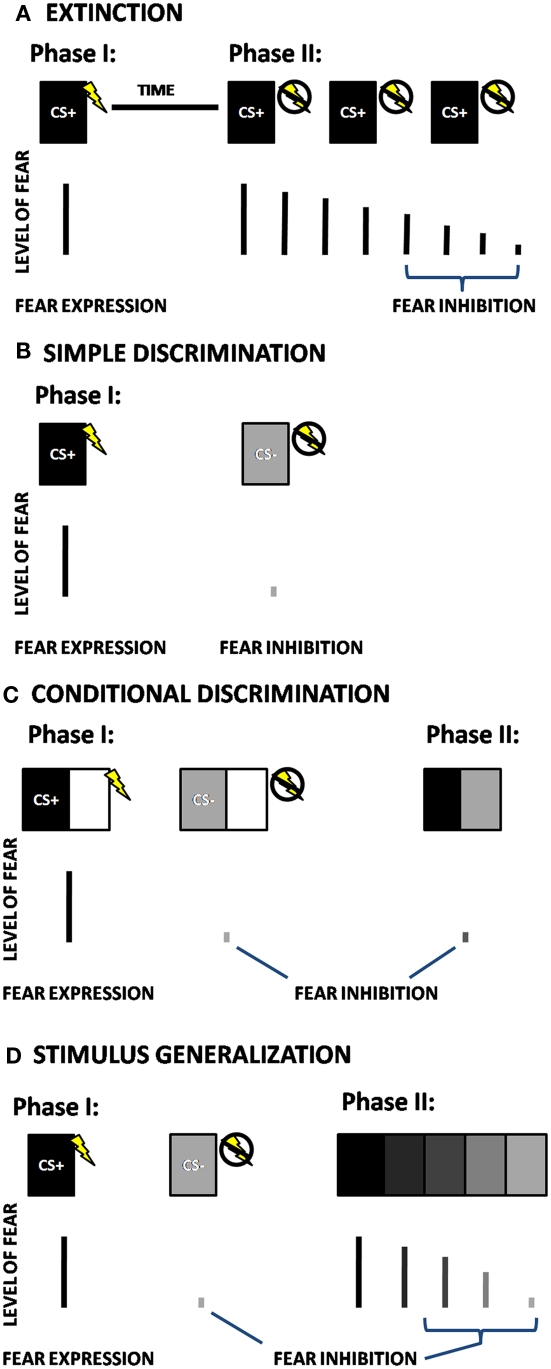Figure 1.
Schematic depictions of four different fear-inhibition paradigms; (A) Extinction, (B) Simple Discrimination, (C) Conditional Discrimination, and (D) Stimulus Generalization. CS+ = Reinforced Conditioned Stimulus; CS− = Non-reinforced Conditioned Stimulus. In fear extinction paradigms (A), a stimulus that was paired with an aversive stimulus (the CS+) during the initial phase is then repeatedly presented without the US in the next phase of the experiment, so that it no longer elicits a fear response. In the simple discrimination paradigm (B), the CS+ is intermingled with a separate stimulus that is not paired with the US (CS−). In a conditional discrimination experiment (C), the US occurs depending on the presence of the CS+ when it is combined with a neutral (X) cue, which is also combined with the CS− to predict the absence of the US. In the next phase of the experiment, presentation of CS+ and CS− together, without the shared cue (X) results in a reduced fear response compared to the response to CS+. In a stimulus generalization experiment (D), after the initial conditioning, the second phase of the experiment presents iterations of CSs that differ from the CS+ in small increments. The number of degrees required for discrimination is an indication of cue overgeneralization.

